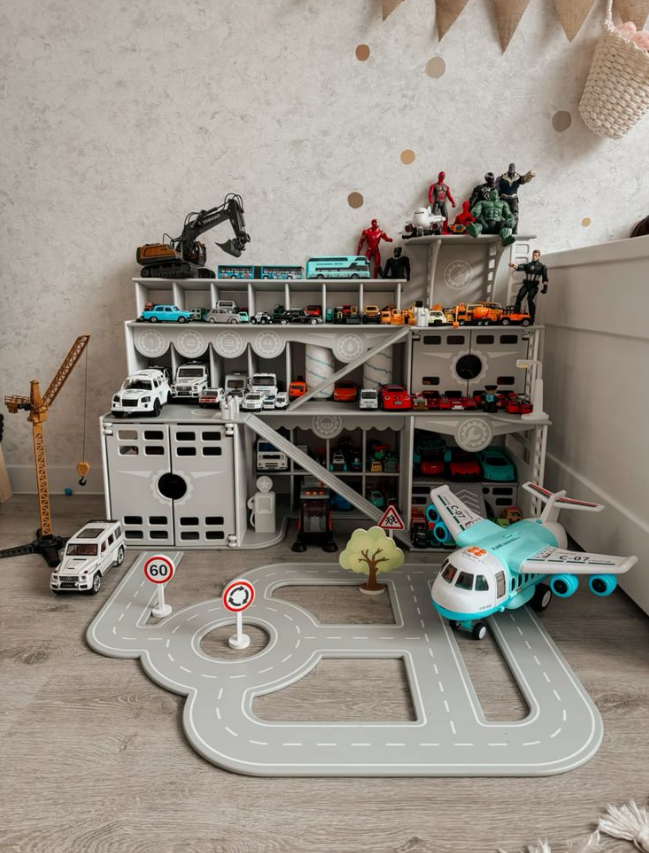The other day I was watching my oldest son play with one of his toys, and I realized he was experimenting with different types of energy. His toy was a hot wheels track that clamped to a table on one end , and hung down on the other.
When I saw my son playing, I realized this was an opportunity for an experiment! So I asked him, “What would happen if you changed the height of the track? Would the car stop closer or farther from the end of the track?” He shrugged his shoulders.
The two types of energy my son was playing with were potential energy and kinetic energy. Potential Energy (or PE for short) is the energy stored in an object because of its height from the ground. Potential energy is expressed as:

Kinetic Energy (or KE for short) is the energy in an object when it is moving. Kinetic energy is expressed as:

According to the law of conservation of energy, energy can neither be created nor destroyed. Energy can, however, change forms. In the case of my son’s toy, the energy of the car was changing from potential to kinetic energy.
To guess the answer to the question I asked my son “What would happen if you changed the height of the track? Would the car stop closer or farther from the end of the track?”, let’s look at the math first:
Since energy can neither be created nor destroyed, then the energy the car has at the top of the track is equal to the energy the car has going down the track. In other words, the potential energy of the car is equal to its kinetic energy:
PE=KE
Substituting in the equation for each forms of energy, you get:
mgh=½mv²
Thinking about speed, how is it usually expressed? In miles per hour, or inches per second, right? In other words, speed is distance traveled (d, miles) divided by time (t, hour), or d/t .
So substituting in d/t for v, the equation changes to:
mgh=½m(d/t)²
or
mgh=½md²/t²
In the equation above, how does height (h) relate to distance (d)? Focusing on just the two variables we’re interest in (height and distance), you’ll see they relate to each other as follows:
h=d²
Height is directly related to distance. Directly related means that when one variable gets bigger, the other variable also gets bigger (or as one variable gets smaller, the other variable gets smaller). In our example, directly related means that as the starting pointof the car gets higher, the car will travel farther.
To show my son this relationship, I came up with a quick little experiment.
EXPERIMENT TIME
- I found six wooden blocks my husband had in the garage, all about the same size.
- I used four blocks and a longer piece of wood to create the first height.
- Next I clamped the track onto the longer piece of wood.
- My son then ran one of his cars down the track, and we marked where it stopped with a piece of tape.
- For the next height, we added one block to each side.
- My son ran the same car down the track, and marked where it stopped with a piece of tape.
What were our results?
—————————————–Drum roll please!!——————————————-
The second distance (the one with the highest starting point) was greater than the first distance! In other words, as the starting point of the car got higher, the car traveled farther. Height and distance are directly related, just like the math showed us!
And that is just another way kids’ toys can teach them engineering!
